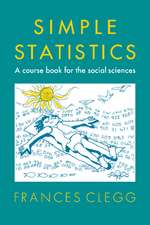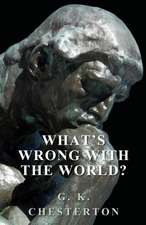Reading Victorian Deafness: Signs and Sounds in Victorian Literature and Culture: Series in Victorian Studies
Autor Jennifer Esmailen Limba Engleză Hardback – 15 apr 2013
Winner of the 2013 Sonya Rudikoff Award for best first book in Victorian Studies
Short-listed for the 2013 British Society for Literature and Science Book Prize.
Reading Victorian Deafness is the first book to address the crucial role that deaf people, and their unique language of signs, played in Victorian culture. Drawing on a range of works, from fiction by Charles Dickens and Wilkie Collins, to poetry by deaf poets and life writing by deaf memoirists Harriet Martineau and John Kitto, to scientific treatises by Alexander Graham Bell and Francis Galton, Reading Victorian Deafness argues that deaf people’s language use was a public, influential, and contentious issue in Victorian Britain.
The Victorians understood signed languages in multiple, and often contradictory, ways: they were objects of fascination and revulsion, were of scientific import and literary interest, and were considered both a unique mode of human communication and a vestige of a bestial heritage. Over the course of the nineteenth century, deaf people were increasingly stripped of their linguistic and cultural rights by a widespread pedagogical and cultural movement known as “oralism,” comprising mainly hearing educators, physicians, and parents.
Engaging with a group of human beings who used signs instead of speech challenged the Victorian understanding of humans as “the speaking animal” and the widespread understanding of “language” as a product of the voice. It is here that Reading Victorian Deafness offers substantial contributions to the fields of Victorian studies and disability studies. This book expands current scholarly conversations around orality, textuality, and sound while demonstrating how understandings of disability contributed to Victorian constructions of normalcy. Reading Victorian Deafness argues that deaf people were used as material test subjects for the Victorian process of understanding human language and, by extension, the definition of the human.
Short-listed for the 2013 British Society for Literature and Science Book Prize.
Reading Victorian Deafness is the first book to address the crucial role that deaf people, and their unique language of signs, played in Victorian culture. Drawing on a range of works, from fiction by Charles Dickens and Wilkie Collins, to poetry by deaf poets and life writing by deaf memoirists Harriet Martineau and John Kitto, to scientific treatises by Alexander Graham Bell and Francis Galton, Reading Victorian Deafness argues that deaf people’s language use was a public, influential, and contentious issue in Victorian Britain.
The Victorians understood signed languages in multiple, and often contradictory, ways: they were objects of fascination and revulsion, were of scientific import and literary interest, and were considered both a unique mode of human communication and a vestige of a bestial heritage. Over the course of the nineteenth century, deaf people were increasingly stripped of their linguistic and cultural rights by a widespread pedagogical and cultural movement known as “oralism,” comprising mainly hearing educators, physicians, and parents.
Engaging with a group of human beings who used signs instead of speech challenged the Victorian understanding of humans as “the speaking animal” and the widespread understanding of “language” as a product of the voice. It is here that Reading Victorian Deafness offers substantial contributions to the fields of Victorian studies and disability studies. This book expands current scholarly conversations around orality, textuality, and sound while demonstrating how understandings of disability contributed to Victorian constructions of normalcy. Reading Victorian Deafness argues that deaf people were used as material test subjects for the Victorian process of understanding human language and, by extension, the definition of the human.
Din seria Series in Victorian Studies
- 19%
 Preț: 441.22 lei
Preț: 441.22 lei - 19%
 Preț: 480.20 lei
Preț: 480.20 lei - 23%
 Preț: 475.50 lei
Preț: 475.50 lei - 19%
 Preț: 441.36 lei
Preț: 441.36 lei - 23%
 Preț: 472.79 lei
Preț: 472.79 lei - 23%
 Preț: 477.86 lei
Preț: 477.86 lei -
 Preț: 320.74 lei
Preț: 320.74 lei -
 Preț: 296.71 lei
Preț: 296.71 lei - 23%
 Preț: 475.64 lei
Preț: 475.64 lei - 23%
 Preț: 476.35 lei
Preț: 476.35 lei - 23%
 Preț: 477.11 lei
Preț: 477.11 lei - 23%
 Preț: 474.88 lei
Preț: 474.88 lei - 23%
 Preț: 482.73 lei
Preț: 482.73 lei - 23%
 Preț: 472.95 lei
Preț: 472.95 lei - 37%
 Preț: 343.42 lei
Preț: 343.42 lei - 43%
 Preț: 346.19 lei
Preț: 346.19 lei - 23%
 Preț: 526.63 lei
Preț: 526.63 lei - 23%
 Preț: 558.02 lei
Preț: 558.02 lei - 23%
 Preț: 526.63 lei
Preț: 526.63 lei - 23%
 Preț: 524.86 lei
Preț: 524.86 lei -
 Preț: 257.19 lei
Preț: 257.19 lei -
 Preț: 271.11 lei
Preț: 271.11 lei -

Preț: 475.64 lei
Preț vechi: 617.72 lei
-23% Nou
Puncte Express: 713
Preț estimativ în valută:
91.02€ • 95.34$ • 75.43£
91.02€ • 95.34$ • 75.43£
Carte tipărită la comandă
Livrare economică 09-23 aprilie
Preluare comenzi: 021 569.72.76
Specificații
ISBN-13: 9780821420348
ISBN-10: 0821420348
Pagini: 296
Ilustrații: yes, drawings & photos
Dimensiuni: 152 x 229 x 23 mm
Greutate: 0.52 kg
Ediția:1
Editura: Ohio University Press
Colecția Ohio University Press
Seria Series in Victorian Studies
ISBN-10: 0821420348
Pagini: 296
Ilustrații: yes, drawings & photos
Dimensiuni: 152 x 229 x 23 mm
Greutate: 0.52 kg
Ediția:1
Editura: Ohio University Press
Colecția Ohio University Press
Seria Series in Victorian Studies
Recenzii
“Jennifer Esmail has written the definitive work on deafness and language in Victorian England. But beyond that she has contributed immeasurably to our understanding of the way that language, spoken and written, was understood in that era culturally, politically, and socially. Since language was so central to the Victorians, this book opens a window not only on deafness but the larger Victorian culture as well.”—Lennard Davis, Department of English, University of Illinois at Chicago
“[A] truly excellent, original book that deserves to be widely read… Reading Victorian Deafness is an astonishing contribution not only to disability studies but also to the many uses to which the shifting relations between sound and print were put in nineteenth-century literature and culture.” —SEL: Studies in English Literature, 1500-1900
“Appealing to a wide range of academic audiences, Esmail's monograph is an authoritative and thought-provoking study that encourages its readers to reconsider the significance of the spoken language in terms of what it means to be human.”—Literature & History
“An extensively and assiduously researched study of Victorian Deafness as a multi-layered cultural entity … Reading Victorian Deafness makes a groundbreaking contribution to Disability Studies at large and Victorianist Disability Studies specifically.”—Martha Stoddard Holmes, author of Fictions of Affliction: Physical Disability in Victorian Culture
“(Reading Victorian Deafness) offers a richer demonstration of how Victorian deafness might make us think. As a truly comprehensive study of Victorian deafness, it incrementally expands the scope of disability studies theory and practice by clearly synthesizing disability studies with other subdisciplines, thus building innovative new frameworks for investigating the cultural history of the body.”—Review 19
Notă biografică
Jennifer Esmail is a coordinator in the Centre for Community Partnerships at the University of Toronto. She formerly held the positions of assistant professor in the Department of English and Film Studies at Wilfrid Laurier University and postdoctoral fellow in the Department of English at Rutgers, the State University of New Jersey. She has published research on the representation of deafness and disability in Victorian literature and culture in ELH: English Literary History, Sign Language Studies, Victorian Poetry, and Victorian Review.
Cuprins
- List of Illustrations
- Acknowledgments
- Introduction
- One
“Perchance My Hand May Touch the Lyre”
Deaf Poetry and the Politics of Language - Two
“I Listened with My Eyes”
Writing Speech and Reading Deafness in the Fiction of Charles Dickens and Wilkie Collins - Three
“Human in Shape, but Only Half Human in Attributes”
Sign Language, Evolutionary Theory, and the Animal-Human Divide - Four
“A Deaf Variety of the Human Race”?
Sign Language, Deaf Marriage, and Utopian and Dystopian Visions of Deaf Communities - Five
“Finding the Shapes of Sounds”
Prosthetic Technology, Speech, and Victorian Deafness - Conclusion
The Act of Reading Victorian Deafness - Notes
- Bibliography
- Index
Descriere
Reading Victorian Deafness is the first book to address the crucial role that deaf people, and their unique language of signs, played in Victorian culture.











